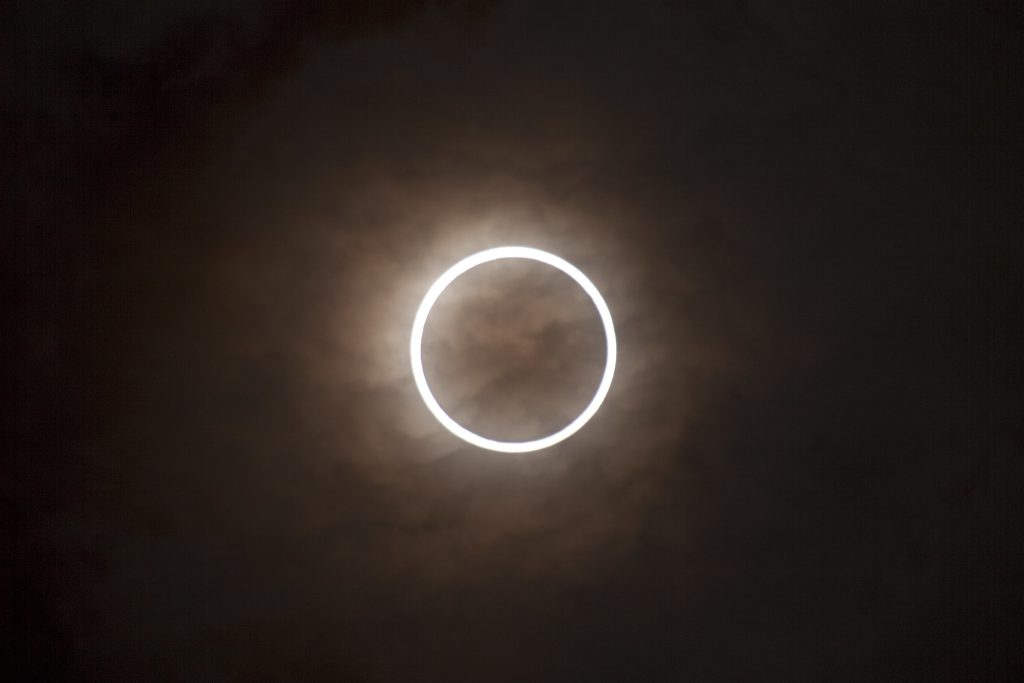Early risers in northern Ontario could catch a glimpse of a rare annular eclipse this Thursday morning while others across the province could see a significant partial eclipse, but those looking to view the phenomenon will want to prepare with solar viewing glasses.
Solar eclipses are categorized into three main types: total, partial and annular. A total eclipse occurs when the moon blocks the visible surface of the sun while a partial eclipse occurs when the moon overlaps just a portion of the sun. An annular eclipse is like a total eclipse except that the moon is closer to Earth in its orbit, creating a ring of solar light. People in parts of Canada, Greenland and northern Russia will experience the annular eclipse while people in the eastern United States, northern Alaska and other parts of the world will be able to see a partial eclipse. Muskoka residents can expect to see a partial eclipse, weather permitting.
“Solar eclipses happen about once or twice a year, but this one is unique to our part of the world,” said a statement from the Dunlap Institute for Astronomy & Astrophysics at the University of Toronto. “Due to the nature of an annular eclipse, safety viewing glasses (or eclipse glasses) are required for direct observation.”
The Dunlap Institute started a campaign in February to distribute safety glasses to people living within the path of annularity. Now, they’re challenging members of the public to use a projection method to safely observe the eclipse even without glasses by letting the sunlight pass through a hole and onto a screen.
For more details on how to safely view an eclipse, see the graphic below. Weather permitting, a view of the partial solar eclipse will be streamed on YouTube and on nasa.gov/live starting at 5 a.m. EDT.
Photo credit: “Annular solar eclipse 2012” by Nakae is licensed under CC BY 2.0.
